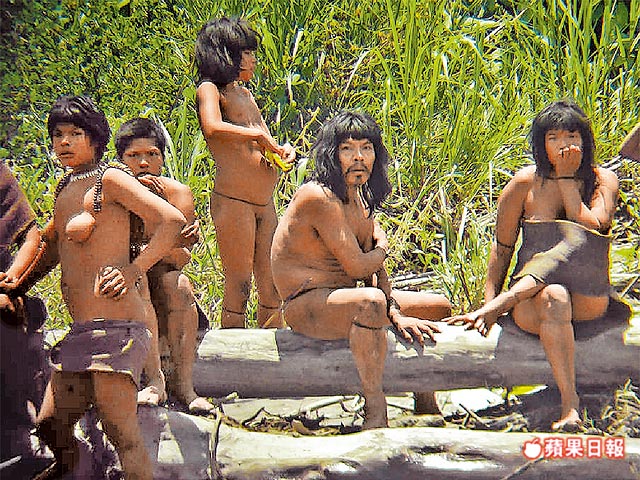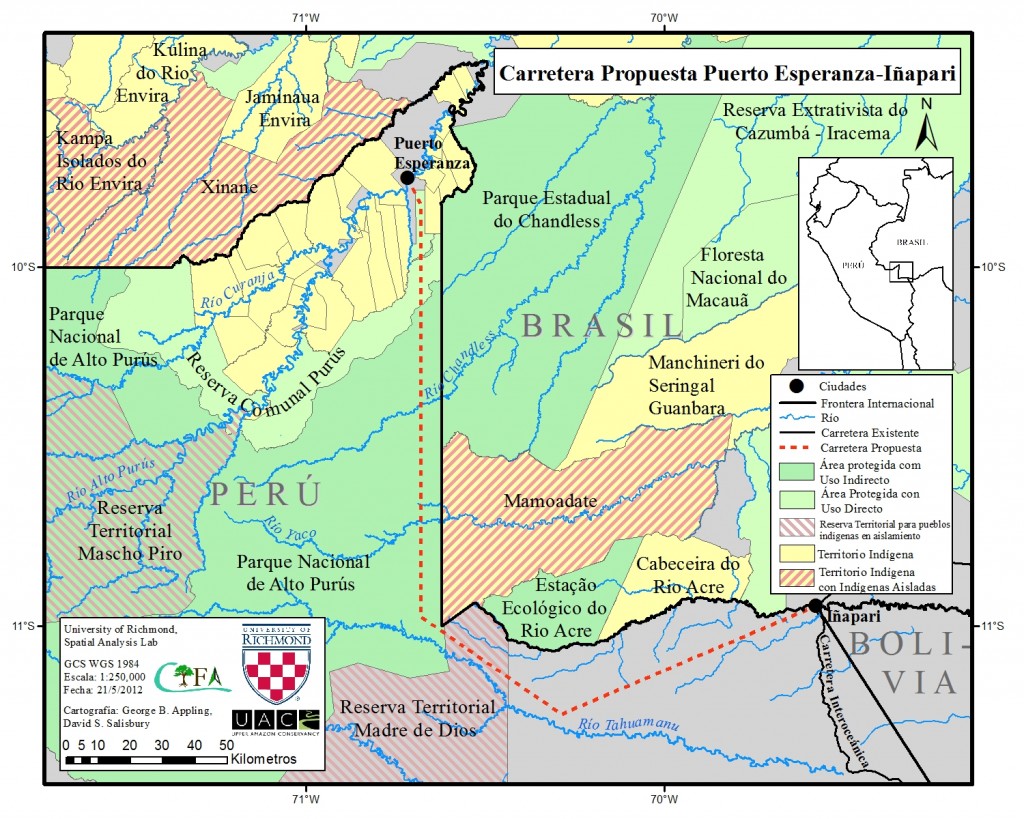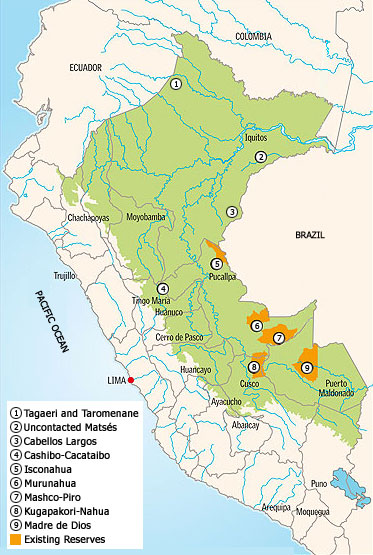Peru’s Amazon Highway Puts Uncontacted Tribes At Risk
posted on July 3rd, 2012 in Amazon Jungle, Environment, Indigenous Rights, Peru, Uncontacted Tribes
New Amazon Highway ‘Would Put Peru’s Last Lost Tribes At Risk‘
Eco-campaigners clash with developers over plan to build 125-mile road through rainforest
June 30, 2012
The Observer
A fierce row has broken out over a controversial plan to drive a road through pristine Amazon rainforest, imperilling the future of some of the world’s last uncontacted tribes.
The 125-mile (200km) road would pass through the Alto Purús national park in Peru, connecting a remote area to the outside world but opening up the most biologically and culturally important area of the upper Amazon to logging, mining and drug trafficking. Opponents of the plan fear it will threaten the existence of uncontacted tribes such as the Mashco-Piro. The first detailed photographs of members of the tribe made headlines around the world earlier this year after they were spotted on a riverbank.
The majority indigenous population of the region appears to be largely united in its opposition to the road, which would run parallel to the Brazilian border, connecting the towns of Puerto Esperanza and Iñapari. Conservationists warn it would cause irreparable harm to the environment and the area’s people.
But the road has the support of many mixed-race settlers – or mestizos – who make up roughly one fifth of the region’s population. With the Alto Purús currently accessible only by plane, they believe that the road would improve their quality of life, bringing lower prices for fuel and food and creating profitable development opportunities.
The campaign to build the road has been led by an Italian missionary, Miguel Piovesan, who claims that indigenous people are being kept isolated and denied the chances for development available to the rest of the population. He first proposed the road in 2004, around the time the Peruvian government announced that the Alto Purús was to become the country’s largest national park.
Piovesan’s plan’s met with little initial enthusiasm, but his long and determined campaign, using his own radio station and parish website, has been so successful that the country’s Congress is now due to debate a bill to allow construction to start. Piovesan has been scathing about his opponents, particularly international organisations such as Survival International and the WWF, which he accuses of profiting from keeping the tribes in isolation.
“These international organisations gain money because they present themselves as the saviours of the Indians, this is what it’s all about. So if the Indians evolve, they [the NGOs] lose their business,” he said on a recent radio show. Last week he told the Observer that the reality was that the indigenous people were being kept in a condition of “captivity and slavery incompatible with the true ecology”.
But Piovesan’s opponents suspect that he is more interested in gaining access to potential converts for his church. Reports from Peru say that he has denied the existence of the uncontacted tribes. The main indigenous organisation in Puerto Esperanza, Feconapu, has demanded that the Vatican remove the priest, accusing him of insulting and humiliating the native population.
One indigenous leader, Julio Cusurichi, warned that building the road would amount to “ethnocide” of the uncontacted tribes. According to the last census, in 2007, there are only about 3,500 people living in the region, including eight known tribes and an unknown number of uncontacted Indians living in the Madre de Díos territorial reserve. The 6.7m-acre national park is also home to wildlife including jaguar, scarlet macaw and giant river otter.
The Upper Amazon Conservancy, which works with the indigenous population, has been one of the most vocal critics of the road. Its director, Chris Fagan, accused the road’s supporters of short-sighted greed and said the majority of the population were vehemently opposed.
“They depend on the forest and rivers for daily sustenance. They see the highway as just the latest example of mestizo greed and exploitation – of rubber, their religion, animal skins, mahogany, and now a highway accessing their homelands,” he said. “It will ruin one of the wildest and culturally important places on Earth. Will reason or greed prevail?”
Rebecca Spooner, Survival International’s Peru campaigner, said building the road would devastate entire peoples: “These uncontacted tribes live either side of the Peru-Brazil border. Building this road through their forest tramples over their rights, imposing so-called ‘development’ upon them. Congress has the opportunity to step in before it’s too late. This road should not be approved.”
The issue of access to areas inhabited by uncontacted tribes came to the fore in January when the Observer exposed the plight of the Jarawa tribe of the Andaman Islands, whose women and girls were being persuaded to dance semi-naked for tourists in return for gifts of food.
Last month India’s government finally took action to end the abuse, introducing a law to create a 5km buffer zone around the Jarawa’s reserve and making breaches of the law punishable with up to seven years in jail.
But in a sign that Delhi has a fight on its hands to protect the tribe, the Andaman administration responded by instructing its police force to think very carefully before taking any action against settlers living around the buffer zone.



